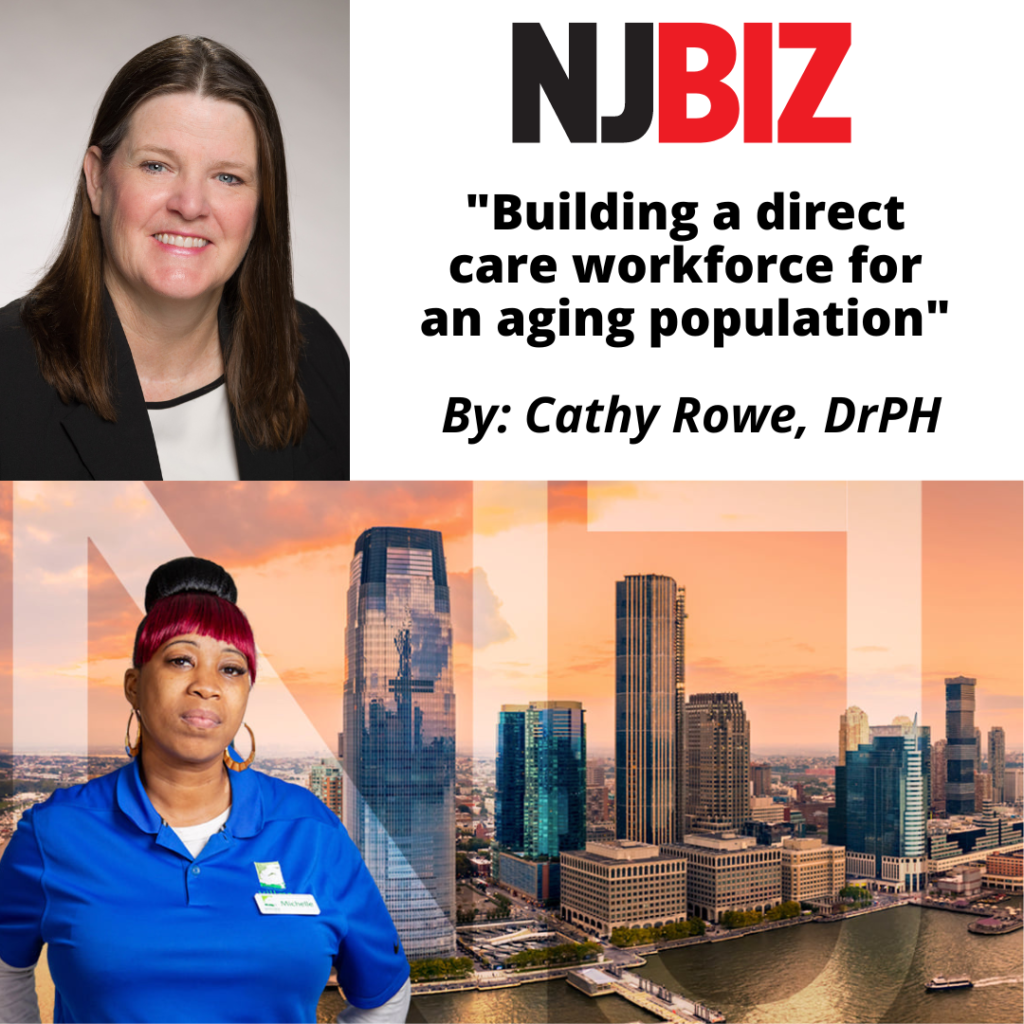
By: Cathy Rowe
June 6, 2022
This article was originally published on njbiz.com and is posted here with permission.
At New Jersey Advocates for Aging Well, we are always looking at the numbers. So, consider these statistics. The population age 65+ was the fastest growing group in New Jersey between 2010 and 2020, increasing 26.8%, according to usafacts.org/data. This number means the 65+ population increased from 13.5% in 2010 to 17% in 2020. And the trend is expected to continue. The U.S. Census Bureau projects that by 2030, those aged 60 and older will make up 24.5% of our state’s population.
This trend in aging is a good thing. It represents not only baby boomers reaching retirement age, but also increased longevity. Not only are more people “older” but they are also living longer than ever before. The hope is that these seniors will lead vibrant and interesting lives for many years. However, an estimated 70% will need some type of support as they age. And so, our aging population will increase demand on our care infrastructure.
That is why NJAAW has partnered with PHI, a national organization focused on the direct care workforce, to bring the Essential Jobs, Essential Care initiative to New Jersey, and to build on recent progress in the state to support the direct care workforce. This workforce – which includes certified home health aides, certified nursing assistants, and direct support professionals – provides essential care to thousands of residents in their homes, community settings and in-patient facilities. As the COVID-19 pandemic has made clear, direct care workers provide critical support to older adults and people with disabilities across the state. With our aging population, we know the need will increase just as the workforce is shrinking.
Inadequate compensation, limited training and advancement opportunities, and other challenges are pushing direct care workers away from this sector. With recent increases in minimum wage and demand for workers in other sectors, people can choose to work in easier settings for the same or more pay DCWs need to pay for classes, training and to receive certification from one of several state offices before they can earn their first paycheck in patient care. In addition, nearly 40% of New Jersey’s direct care workers live in or near poverty, and 41% access some form of public assistance. This results in workers paid through Medicaid being eligible to receive Medicaid – an unsustainable situation.

The U.S. Census Bureau projects that by 2030, those aged 60 and older will make up 24.5% of our state’s population.
It is becoming more and more difficult for providers to meet current and growing demand. So, we are committed to building a strategic road map for recruiting, training and retaining direct care workers that will benefit all New Jersians, both now and in the future.
Currently, there are just over 101,000 direct care workers in New Jersey. PHI estimates that long-term care employers here will need to fill nearly 179,000 job openings in direct care by 2030, which includes new jobs to meet growing demand and jobs that must be filled when existing workers transfer to other occupations or exit the labor force. Our seniors are relying on this workforce to support them; we must do more to ensure it is there for them.
There has been some great progress in recognizing the need for and the needs of direct care workers recently. The Long-Term Care Ombudsman’s Office secured higher pay for nursing home workers under COVID. The New Jersey Health Care Quality Institute produced a comprehensive report on the need for an across-the-board strategy to expand and prepare the health care workforce in the state. The Coalition for a DSP Living Wage made great strides in helping workers serving people with disabilities. Programs including NJ Pathways and Schools that Can are opening training and establishing career pathways to bring more people into this important field.
In addition, the state has committed funds to this effort – Gov. Phil Murphy earmarked $240 million last July to wage increases for a range of direct care workers; early this year, he signed into law a bill that dedicates $1 million to creating pipeline and career advancement opportunities for direct support professionals. These are great starts. What we need now is to work together to build a strategy that will see us through the current worker shortage, find commonalities, and create advocacy road maps with concrete and achievable policy goals and activities that will work for the long term.
Over the next 18 months, we will continue bringing together representatives from a wide range of providers and services in N.J. for a common goal – to increase and improve the direct care workforce. As we learned in the first convening of the PHI Coalition on May 23 and 24, DCWs have unique skills and character traits. This is a hard job, both physically and emotionally. Older adults deserve a workforce that is qualified to care, and also bring patience, compassion and dedication to their patients.
I invite stakeholders to join us in this effort. We are striving for a strategy that benefits all sectors of health care services. With a well-trained and fairly compensated workforce, all health care and service providers can benefit – whether inpatient facilities or home-based services.
At NJAAW, we advocate for what it takes to age well, encourage people to think ahead about where and how they want to age, and what they need to do to prepare. But no matter how strategic we are, we will never know what support we need until we need it. As they say, “the best laid plans of mice and men…” So, we must plan for a future where a significant portion of our population will need supportive services to age in the great state of New Jersey. This future needs a strong workforce.
Cathy Rowe is executive director of New Jersey Advocates for Aging Well. The Essential Jobs, Essential Care NJ initiative is supported by The Henry and Marilyn Taub Foundation.

